Application of Tubular Centrifuges in the Separation of Nanoparticles
I. Introduction
In the era of rapid technological development, nanoparticles exhibit unique properties and application potential in numerous fields, such as materials science, biomedicine, electronics, etc. However, efficiently and precisely separating nanoparticles from complex mixtures is a highly challenging task. As an advanced centrifugal separation device, the tubular centrifuge, with its unique working principle and excellent performance, plays a crucial role in the field of nanoparticle separation, providing key technical support for research and production in related fields.
A tubular centrifuge is mainly composed of a high - speed rotating slender drum, a driving device, a feeding system, and a discharging system. Its operation is based on the principle of centrifugal sedimentation. When a mixed liquid containing nanoparticles enters the high - speed rotating drum (the rotational speed usually can reach 15,000 - 50,000 revolutions per minute or even higher) through the feeding port, under the action of a strong centrifugal force field, due to the density differences between nanoparticles and other components in the mixed liquid, even though nanoparticles are extremely small in size, they will still be subjected to different degrees of centrifugal force. Nanoparticles with higher density are subjected to a greater centrifugal force and rapidly move towards the drum wall and settle, while the liquid phase with lower density and some low - density impurities stay closer to the center of the drum. Through a well - designed discharging device, the nanoparticles settled on the drum wall and the clear liquid near the center can be collected separately, thus achieving the effective separation of nanoparticles from the mixed liquid.
III. Advantages of Tubular Centrifuges in Nanoparticle Separation
(I) High Separation Precision
Precise Capture of Nanoparticles
For particles on the nanoscale, the ultra - high rotational speed of the tubular centrifuge generates a strong centrifugal force that can precisely act on these tiny particles. Even if the density differences among nanoparticles are extremely subtle, obvious sedimentation stratification can occur in the centrifugal force field. For example, when separating gold nanoparticles with a particle size of 50 - 100 nanometers from other impurities in the solution, the tubular centrifuge can efficiently settle the gold nanoparticles to the drum wall, achieving precise separation from the surrounding medium, and the separation purity can reach over 95%.
Removal of Tiny Impurities
The application of nanoparticles requires extremely high purity, as even a tiny amount of impurities can affect their performance. The powerful separation ability of the tubular centrifuge can effectively remove tiny impurities in the mixture that are similar in size to nanoparticles, such as bacteria, viruses, and colloidal particles. When preparing nanodrug carriers in the biomedical field, the tubular centrifuge can remove potential microorganisms and other colloidal impurities in the solution, ensuring the high purity of nanodrug carriers and providing a reliable guarantee for subsequent drug loading and application.
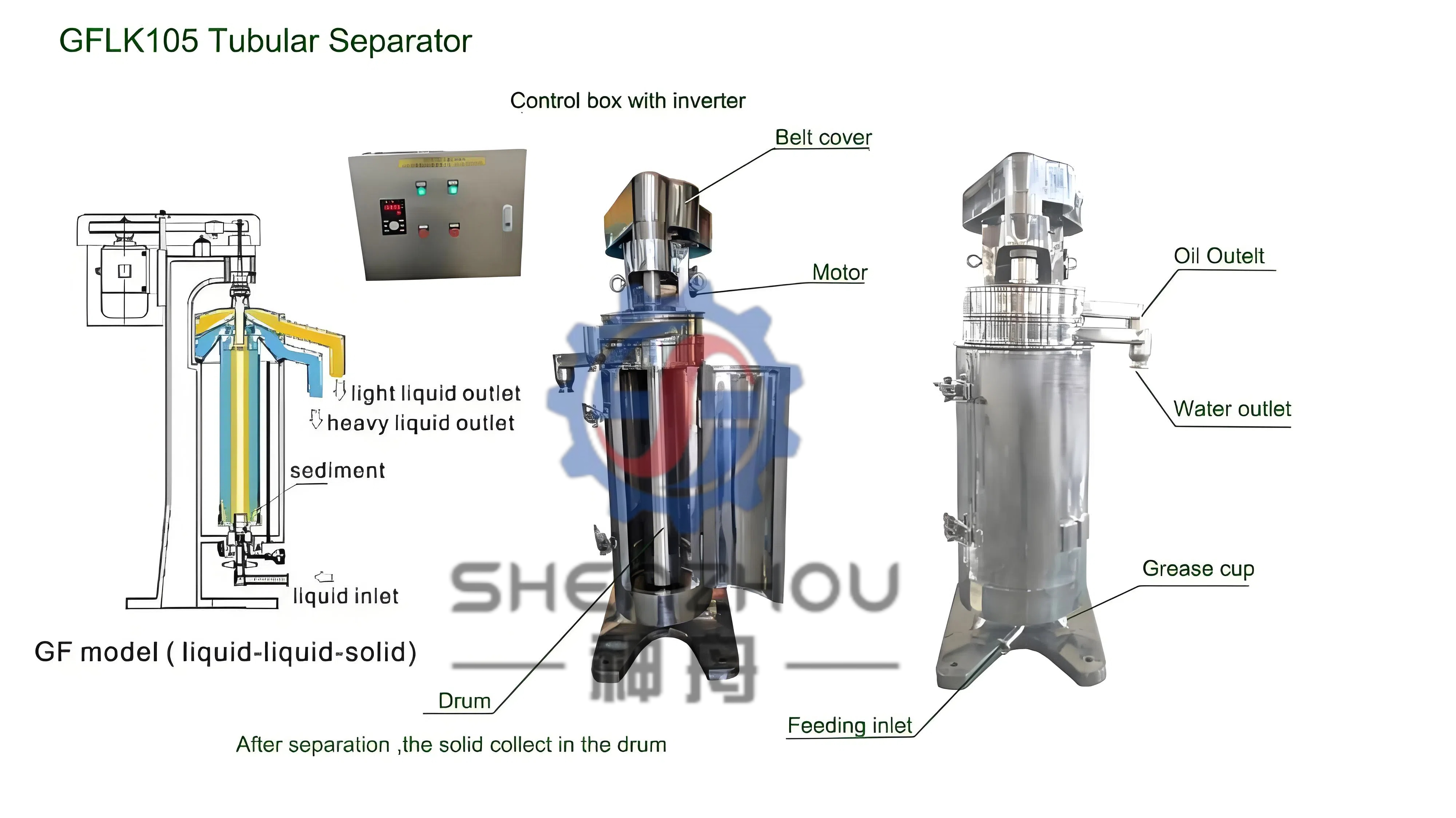 | 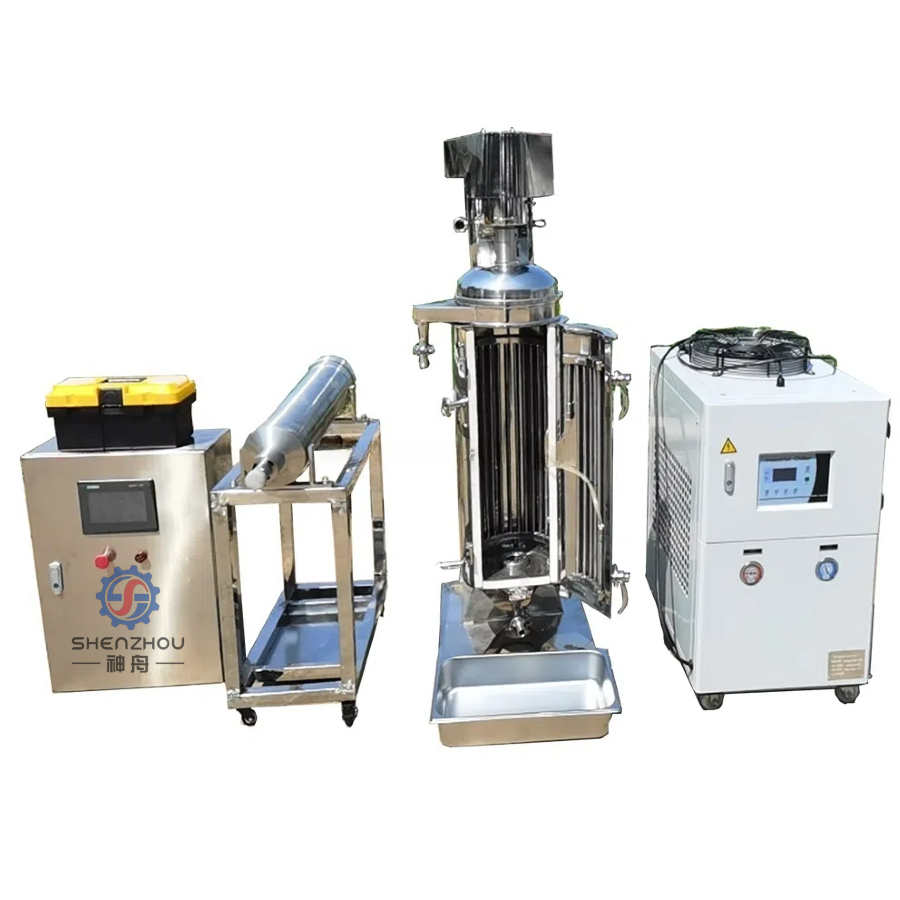 |
Shortening Separation Time
Compared with traditional separation methods such as gravity sedimentation and filtration, the high - speed rotation of the tubular centrifuge greatly accelerates the sedimentation speed of nanoparticles. Traditional gravity sedimentation may take several hours or even several days to cause obvious sedimentation of nanoparticles, while the tubular centrifuge can complete the separation of the same volume of mixed liquid within a few minutes to dozens of minutes. In the large - scale production of nanomaterials, this efficient and rapid separation characteristic can significantly improve production efficiency and reduce production costs. For example, in the industrial production of nano - titanium dioxide, using a tubular centrifuge can shorten the separation time from several hours to less than 30 minutes, greatly enhancing production efficiency.
Continuous Separation Operation
The tubular centrifuge has the functions of continuous feeding and discharging, which is suitable for the separation requirements of large - scale nanoparticles. On the nanomaterial production line, the mixed liquid containing nanoparticles can be continuously fed into the centrifuge. After separation, the separated nanoparticles and clear liquid are continuously output. The whole process does not require frequent shutdowns, ensuring the continuity and stability of production. This continuous operation mode not only improves production efficiency but also reduces errors and product losses that may be caused by frequent equipment start - and - stop.
(III) Gentle Separation Process
Protecting the Integrity of Nanoparticles
Nanoparticles usually have special physical and chemical properties and are prone to aggregation, deformation, or performance changes due to external factors during the separation process. The shear force generated during the high - speed rotation of the tubular centrifuge is relatively small, which can maintain the integrity and original performance of nanoparticles to the greatest extent. For example, when separating silver nanoparticles with specific morphologies and surface properties, the gentle separation process of the tubular centrifuge can effectively avoid the aggregation and surface damage of silver nanoparticles, enabling them to fully exert their unique optical and electrical properties in subsequent applications.
Suitable for a Variety of Nanomaterials
Whether they are inorganic nanoparticles (such as metal oxide nanoparticles, semiconductor nanoparticles) or organic nanoparticles (such as polymer nanospheres, liposome nanoparticles), the tubular centrifuge can achieve efficient separation under mild conditions. This makes the tubular centrifuge widely applicable in the preparation and application of different types of nanomaterials, providing strong support for the diversified development of nanotechnology.
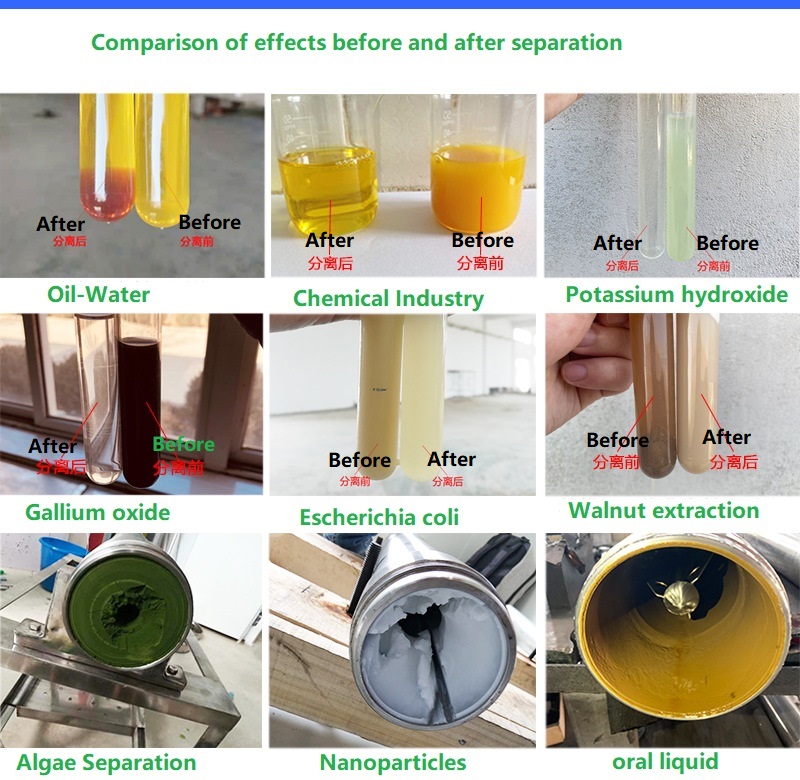 | 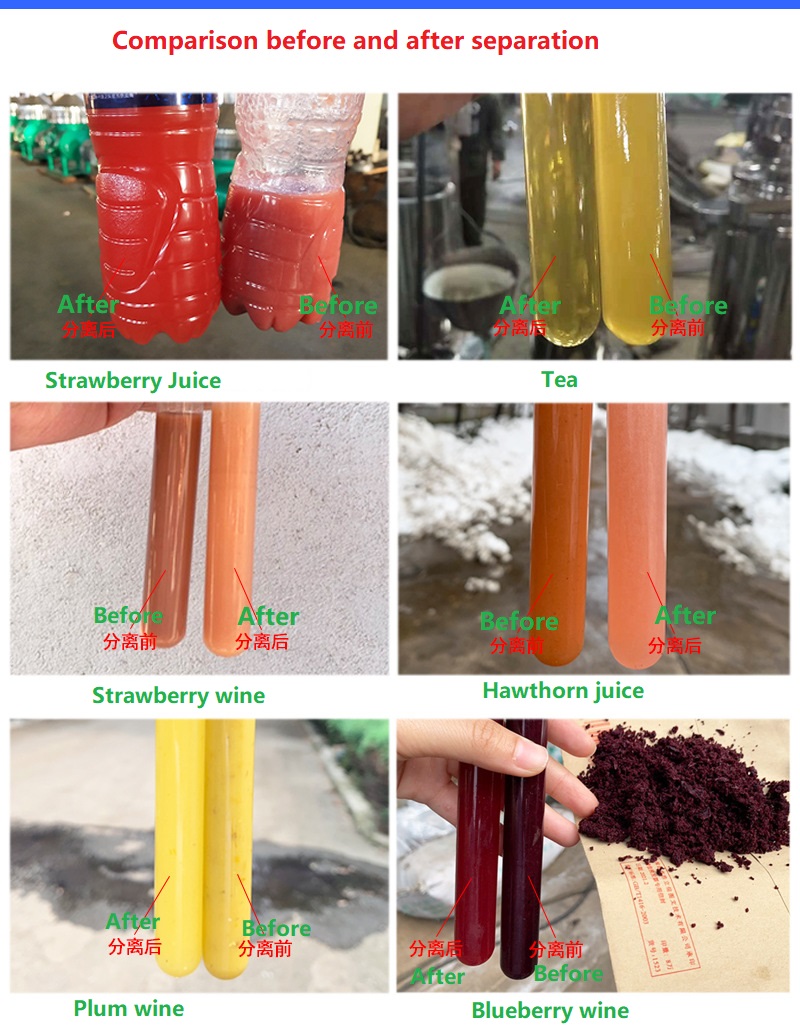 |
IV. Application Examples
(I) In the Field of Materials Science
Preparation of Nanocomposites
When preparing nanocomposites, different types of nanoparticles need to be uniformly dispersed and combined. For example, when preparing carbon nanotube - reinforced metal - matrix composites, it is first necessary to efficiently separate carbon nanotubes from their mixed solution and then combine them with the metal matrix. The tubular centrifuge can quickly and purely separate carbon nanotubes, avoiding the damage and impurity residues of carbon nanotubes that may be caused by traditional separation methods, and providing high - quality raw materials for the preparation of high - performance nanocomposites. After being separated by a tubular centrifuge, the carbon nanotubes, when combined with the metal matrix, significantly improve the mechanical properties of the composite material. Its tensile strength is increased by more than 30% compared with that of the composite material without fine - separated carbon nanotubes.
Preparation of Nanocatalysts
Nanocatalysts have important applications in the chemical industry, and their performance highly depends on the purity and dispersion of nanoparticles. The tubular centrifuge can be used to separate nanoscale catalyst particles from the catalyst precursor solution and remove impurities and unreacted raw materials. Taking the preparation of supported nanoscale palladium catalysts as an example, through the separation of the tubular centrifuge, high - purity nanoscale palladium particles can be obtained, and their dispersion on the support is more uniform. Using the nanoscale palladium catalyst prepared by the separation of the tubular centrifuge, the catalytic activity in organic synthesis reactions is increased by more than 20% compared with that of the catalyst prepared by traditional methods, significantly improving the efficiency and selectivity of chemical reactions.
(II) In the Biomedical Field
Nanodrug Delivery Systems
Nanodrug delivery systems encapsulate drugs in nanoscale carriers to achieve precise drug delivery and controlled release. When preparing nanodrug carriers (such as liposomes, polymer nanoparticles), it is necessary to finely separate and purify the carrier materials. The tubular centrifuge can effectively remove impurities and unassembled monomers in the carrier materials, improving the quality and stability of nanodrug carriers. For example, when preparing doxorubicin liposome nanoparticles for tumor treatment, the tubular centrifuge can separate impurities such as free drugs and unencapsulated lipid molecules in the liposomes, increasing the encapsulation efficiency of doxorubicin liposome nanoparticles from the original 70% to over 90%, enhancing the targeting and therapeutic effect of the drug.
Biomarker Detection
In biomedical diagnosis, it is often necessary to separate nanoscale biomarkers, such as exosomes and nanoantibodies, from biological samples (such as blood and urine). The tubular centrifuge can use its strong centrifugal force to separate these nanoscale biomarkers from complex biological samples. For example, in the early diagnosis of cancer, tumor - derived exosomes are separated from the patient's blood through a tubular centrifuge. The proteins, nucleic acids, and other biomarkers carried by exosomes can be used for the early screening and disease monitoring of cancer. The efficient separation ability of the tubular centrifuge can improve the extraction efficiency and purity of biomarkers, providing a reliable basis for accurate clinical diagnosis.
(III) In the Electronics Field
Preparation of Nanoelectronic Materials
In nanoelectronics, nanoscale semiconductor materials, metal nanowires, etc. are the keys to constructing high - performance electronic devices. The tubular centrifuge can be used to separate these nanoelectronic materials from the reaction solution and remove impurities and solvents. For example, when preparing quantum dot materials required for quantum dot light - emitting diodes (QLEDs), the tubular centrifuge can quickly separate high - quality quantum dots, remove surfactants and unreacted raw materials, and improve the luminous efficiency and stability of quantum dots. The quantum dots prepared by the separation of the tubular centrifuge, when applied to QLED devices, have a luminous efficiency increased by more than 15% compared with that of quantum dots prepared by traditional methods, promoting the performance improvement of nanoelectronic devices.
Treatment of Nanoparticles in Chip Manufacturing
During the chip manufacturing process, it is necessary to accurately separate and process nanoscale photoresist particles, metal nanoparticles, etc. The tubular centrifuge can separate the required nanoparticles from the mixed solution according to the density differences of particles and control their particle size distribution. For example, in advanced chip manufacturing processes, a tubular centrifuge is used to separate photoresist nanoparticles within a specific particle size range for the preparation of high - precision photolithography patterns, improving the accuracy and yield of chip manufacturing.
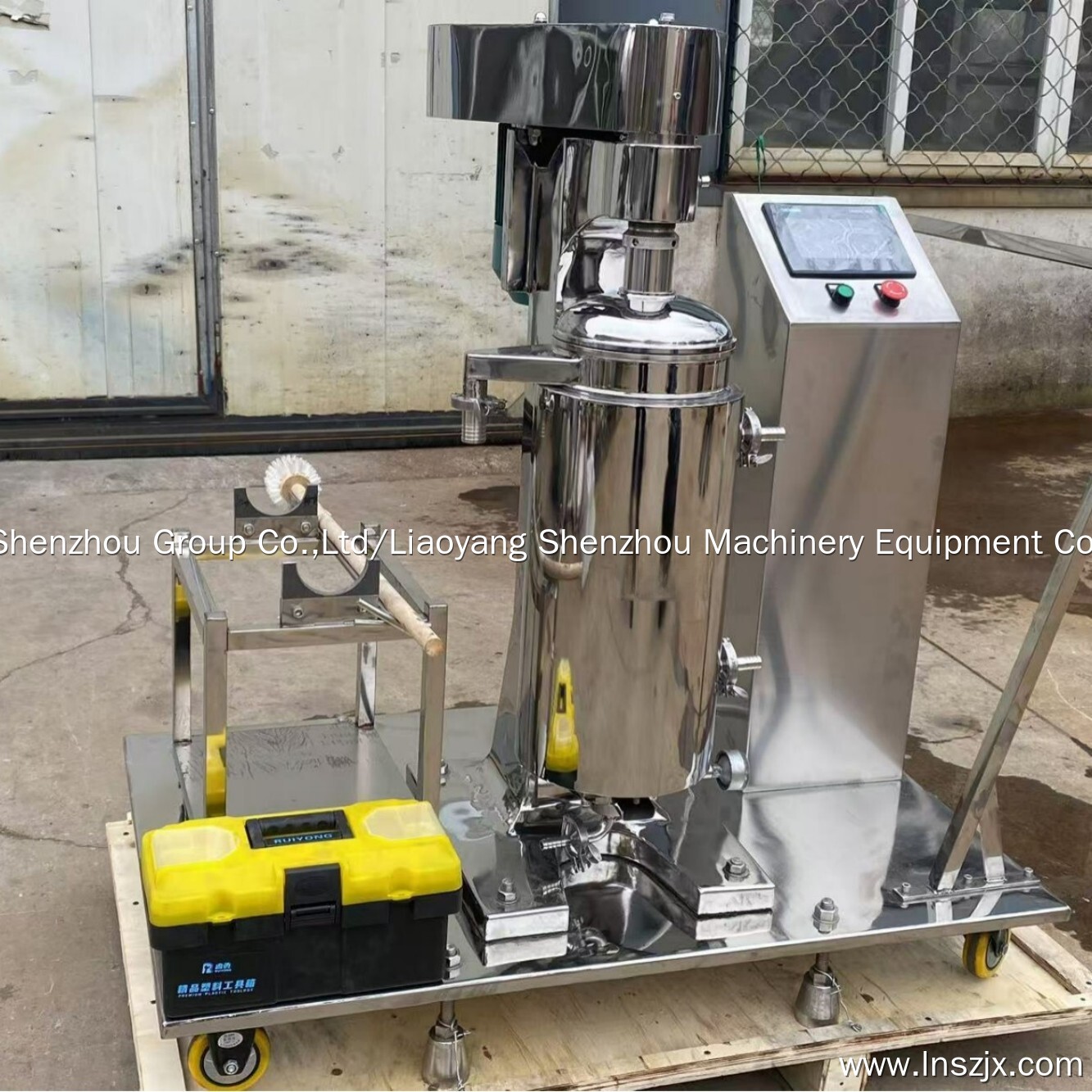 | 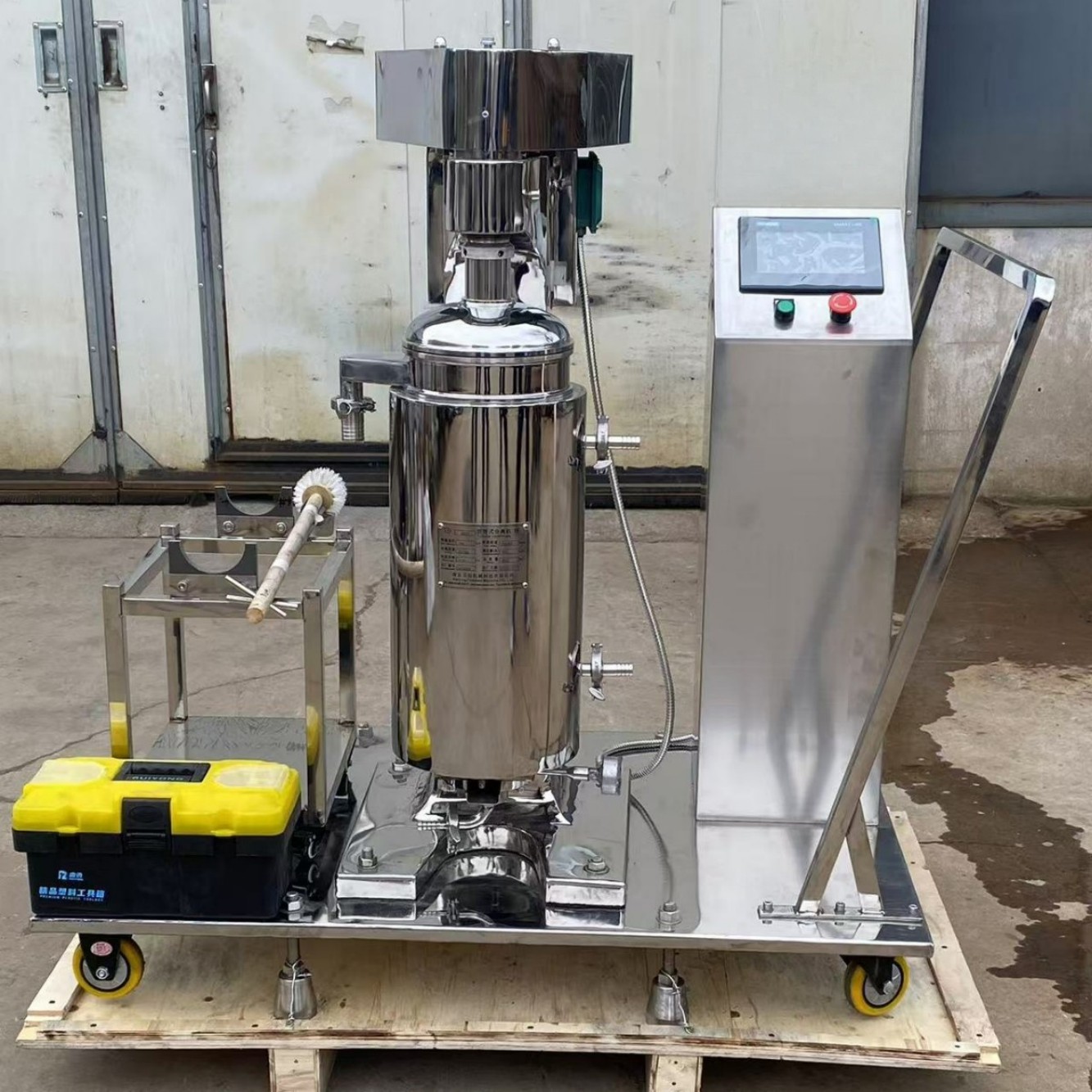 |
V. Precautions in Application
(I) Sample Pretreatment
Dispersing Nanoparticles
Nanoparticles are prone to aggregation in solution, affecting the separation effect. Before feeding the mixed liquid containing nanoparticles into the tubular centrifuge, appropriate dispersion methods, such as ultrasonic dispersion and adding dispersants, need to be adopted to make the nanoparticles evenly dispersed in the solution. For example, when separating nano - silica particles, ultrasonic treatment and adding an appropriate amount of surfactant can effectively prevent the aggregation of nano - silica particles and improve their separation efficiency and purity in the tubular centrifuge.
Filtering Large - Particle Impurities
There may be some large - particle impurities in the mixed liquid, such as dust and insoluble solid particles. These large - particle impurities may clog the feeding pipeline of the centrifuge or damage the drum, affecting the normal operation of the equipment. Therefore, preliminary filtering must be carried out before feeding to remove these large - particle impurities. Methods such as screen filtering and microporous membrane filtering can be used for pretreatment.
(II) Equipment Maintenance and Upkeep
Regularly Checking the Drum
The drum of the tubular centrifuge is subjected to a huge centrifugal force during high - speed rotation and is prone to wear. Regularly check the wear condition of the drum, promptly find and replace the severely worn drum to prevent safety accidents caused by drum rupture. At the same time, check the dynamic balance of the drum to ensure the stability of the centrifuge during operation. For tubular centrifuges used for nanoparticle separation, due to the extremely high requirements for separation precision, it is even more necessary to ensure the good condition of the drum.
Maintaining the Driving Device and Seals
The driving device is a key component to ensure the normal operation of the centrifuge. Regularly lubricate and maintain it, check the working status of components such as the motor and belt, and promptly replace the damaged components. The good performance of the seals is crucial for preventing leakage. Regularly check and replace the seals to ensure the internal sealing of the centrifuge, avoiding material leakage and the entry of external impurities, which may affect the separation effect and purity of nanoparticles.
(III) Optimization of Operating Parameters
Adjusting the Rotational Speed
According to the density, particle size of nanoparticles, and separation requirements, reasonably adjust the rotational speed of the tubular centrifuge. An excessively high rotational speed may cause the aggregation or damage of nanoparticles, while an excessively low rotational speed will result in poor separation effects. Determine the optimal rotational speed through experiments to ensure both the separation effect and the maximum protection of the integrity and performance of nanoparticles. For example, for nano - polymer particles with a relatively low density and small particle size, appropriately reducing the rotational speed can avoid the damage of particles caused by excessive shear force; for metal nanoparticles with a relatively high density, appropriately increasing the rotational speed can accelerate the separation speed.
Controlling the Feeding Speed
An excessively fast feeding speed will make the material distribution in the centrifuge uneven, affecting the separation effect; an excessively slow feeding speed will reduce production efficiency. According to the processing capacity of the centrifuge and the properties of the nanoparticle mixed liquid, precisely control the feeding speed to ensure that the centrifuge operates in a stable working state. Generally, at the beginning of separation, the feeding speed can be appropriately reduced, and after the centrifuge operates stably, it can be gradually adjusted to an appropriate feeding speed. At the same time, attention should be paid to maintaining the continuity and stability of feeding to avoid deterioration of the separation effect due to feeding fluctuations.
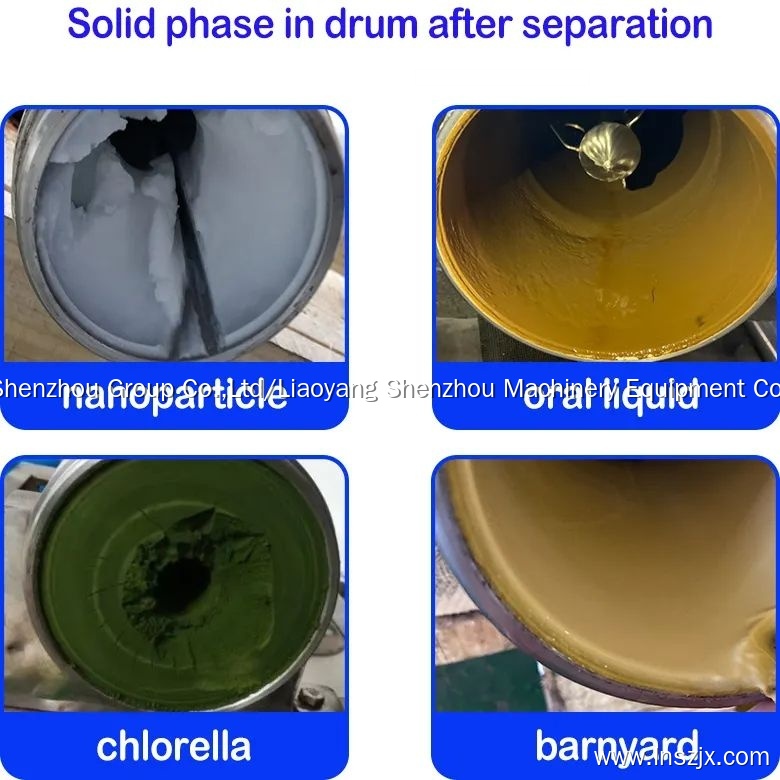 | 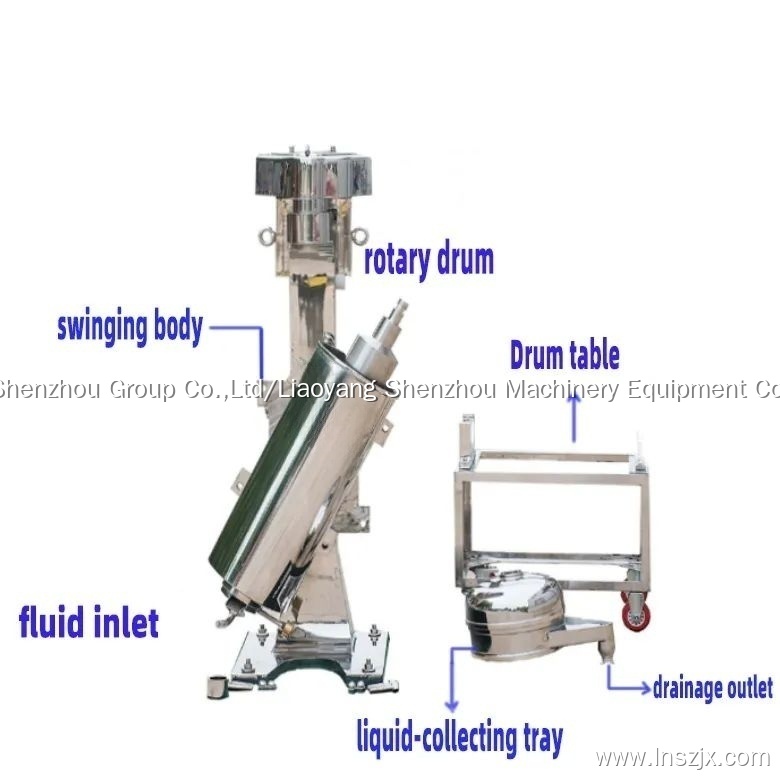 |
VI. Conclusion
With its advantages of high separation precision, efficient and rapid separation, and a gentle separation process, the tubular centrifuge shows great application potential and value in the field of nanoparticle separation. From materials science to biomedicine and then to electronics and other numerous fields, the tubular centrifuge provides key technical support for the preparation, purification, and application of nanoparticles, promoting the rapid development and wide application of nanotechnology. With the continuous improvement of the performance requirements for nanomaterials and the continuous expansion of the application fields of nanotechnology, the tubular centrifuge will continue to innovate and improve in terms of equipment performance optimization and intelligent control, further improving the separation efficiency and quality of nanoparticles and making greater contributions to scientific and technological innovation and industrial development in various fields.
Welcome all who care engaged in the separation and filtration to work with us,and we are also looking for the qualified world wide agents to provide better service and deep marketing.
Copyright © 2025 Shenzhou Group Co.,Ltd/Liaoyang Shenzhou Machinery Equipment Co.,Ltd - www.lnszjx.com All Rights Reserved.辽ICP备18010813号-1